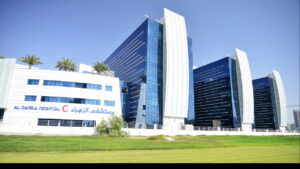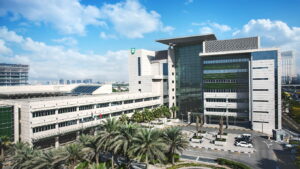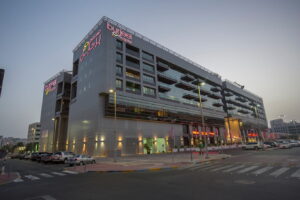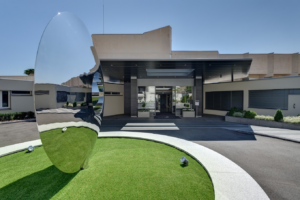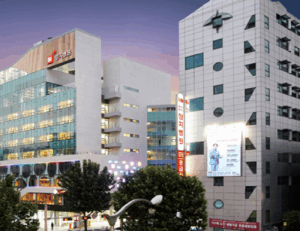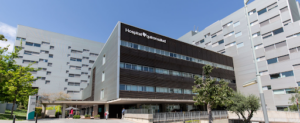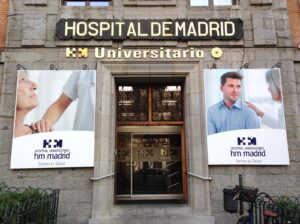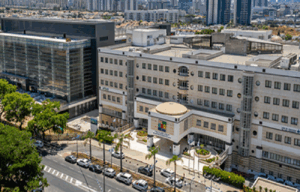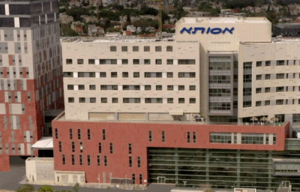Blepharoplasty (eyelid surgery)
Blepharoplasty is the correction of the eyelids and the area around the eyes, involving the removal of excess skin and fat tissue. The primary goal of the procedure is to eliminate aesthetic or functional deficiencies. After the operation, the gaze becomes more open, with a defined eyelid contour.
Blepharoplasty corrects:
- Vision problems caused by improper eye shape or eyelid structure
- Deep wrinkles and ptosis (drooping) of the eye corners
- Excess and sagging skin on the eyelids
- Eye asymmetry
- Under-eye bags and dark circles
- Congenital anatomical defects
For each patient, leading physicians in international clinics select a specific type of blepharoplasty and design a personalized set of procedures included in the operation. Modern ophthalmology distinguishes the following types of blepharoplasty:
- Upper blepharoplasty (the most common type, performed to remove excess skin in the upper eyelid area)
- Lower blepharoplasty (for removing skin and fat in the lower eyelid area)
- Periorbital (circular) blepharoplasty (simultaneous lifting of the area around the eyes with a rejuvenating effect)
- Transconjunctival blepharoplasty (a gentle type of surgery performed from the inner side of the eyelid, with minimal discomfort)
- Canthoplasty and canthopexy (to change the eye shape and lift the corners of the eyes)
Specifics of the procedure in leading international clinics
Top clinics in Europe are equipped with advanced technologies and utilize innovative techniques for performing eyelid plastic surgery. For the comfort and safety of patients, the following methods are used:
Minimally invasive techniques. The development of methods with smaller incisions, such as transconjunctival blepharoplasty, allows visible scarring to be avoided and reduces recovery time.
Laser blepharoplasty. The use of lasers for making incisions and removing excess skin helps minimize bleeding, swelling, and healing time.
3D modeling. The use of 3D technologies for surgical planning enables surgeons to create accurate models of the eyes and eyelids, helping to better visualize the expected results.
Fat tissue augmentation. Lipofilling, or the use of the patient’s own fat cells to fill the area around the eyes, improves contouring and reduces wrinkles.
Biomaterials. New synthetic and biocompatible suture materials reduce the risk of complications and improve aesthetic outcomes.
Top clinics
-
 Istanbul, Turkey Acibadem Altunizade Clinic
Istanbul, Turkey Acibadem Altunizade Clinic -
 Ramat Gan, Israel Sheba clinic
Ramat Gan, Israel Sheba clinic -
 Istanbul, Turkey Acıbadem Ataşehir Clinic
Istanbul, Turkey Acıbadem Ataşehir Clinic -
 Antalya, Turkey Medical Park Antalya Clinic
Antalya, Turkey Medical Park Antalya Clinic -
 Dubai, UAE NMC Healthcare
Dubai, UAE NMC Healthcare -
 Istanbul, Turkey Shishli Memorial Clinic.
Istanbul, Turkey Shishli Memorial Clinic. -
 Dubai, UAE Al Zahra Hospital
Dubai, UAE Al Zahra Hospital -
 Dubai, UAE American Hospital Dubai
Dubai, UAE American Hospital Dubai -
 Graz, Austria Leech Private Clinic
Graz, Austria Leech Private Clinic -
 Abu Dhabi, UAE Burjeel Hospital Abu Dhabi
Abu Dhabi, UAE Burjeel Hospital Abu Dhabi -
 Vienna, Austria Debling Private Clinic
Vienna, Austria Debling Private Clinic -
 Vienna, Austria Confraternity Private Clinic.
Vienna, Austria Confraternity Private Clinic. -
 Dubai, UAE Burjeel Hospital Private Multidisciplinary Clinic
Dubai, UAE Burjeel Hospital Private Multidisciplinary Clinic -
 Vienna, Austria Rudolfinerhaus Private Clinic.
Vienna, Austria Rudolfinerhaus Private Clinic. -
 Lausanne, Switzerland Clinique Montchoisy
Lausanne, Switzerland Clinique Montchoisy -
 Montreux, Switzerland Clinique La Prairie
Montreux, Switzerland Clinique La Prairie -
 Nyon, Switzerland Clinique Genolier
Nyon, Switzerland Clinique Genolier -
 Istanbul, Turkey Ataşehir Memorial Clinic
Istanbul, Turkey Ataşehir Memorial Clinic -
 Antalya, Turkey Memorial Antalya Hastanesi
Antalya, Turkey Memorial Antalya Hastanesi -
 Bodrum, Turkey Acibadem Bodrum Hospital
Bodrum, Turkey Acibadem Bodrum Hospital -
 Seoul, South Korea JK Plastic Surgery Center
Seoul, South Korea JK Plastic Surgery Center -
 Seoul, South Korea H+ Yangji Hospital
Seoul, South Korea H+ Yangji Hospital -
 Barcelona, Spain QuironSalud Barcelona Hospital
Barcelona, Spain QuironSalud Barcelona Hospital -
 Barcelona, Spain Medical Center "Teknon"
Barcelona, Spain Medical Center "Teknon" -
 Barcelona, Spain University Hospital Barnaclinic+
Barcelona, Spain University Hospital Barnaclinic+ -
 Madrid, Spain University Clinic HM Madrid
Madrid, Spain University Clinic HM Madrid -
 Seoul, South Korea Dream Plastic Surgery Clinic
Seoul, South Korea Dream Plastic Surgery Clinic -
 Madrid, Spain University Hospital HM Monteprincipe
Madrid, Spain University Hospital HM Monteprincipe -
 Gebze, Turkey Anadolu Clinic
Gebze, Turkey Anadolu Clinic -
 Zurich, Switzerland Hirslanden Clinic
Zurich, Switzerland Hirslanden Clinic -
 Madrid, Spain Quiron Salud University Hospital
Madrid, Spain Quiron Salud University Hospital -
 Lugano, Switzerland Saint Anna Clinic
Lugano, Switzerland Saint Anna Clinic -
 Petah Tikva, Israel Schneider Children's Medical Center
Petah Tikva, Israel Schneider Children's Medical Center -
 Bursa, Turkey Doruk Nilüfer Hospital
Bursa, Turkey Doruk Nilüfer Hospital -
 Seoul, South Korea SNU Plastic Surgery Clinic
Seoul, South Korea SNU Plastic Surgery Clinic -
 г. Женева, Швейцария Клиника «Женераль-Болье»
г. Женева, Швейцария Клиника «Женераль-Болье» -
 г. Женева, Швейцария Hirslanden Clinique La Colline
г. Женева, Швейцария Hirslanden Clinique La Colline -
 г. Стамбул, Турция Клиника Флоренс Найтингейл
г. Стамбул, Турция Клиника Флоренс Найтингейл -
 г. Тель Авив, Израиль Медицинский центр “Ассута”
г. Тель Авив, Израиль Медицинский центр “Ассута” -
 г. Петах-Тиква, Израиль Медицинский центр имени Ицхака Рабина
г. Петах-Тиква, Израиль Медицинский центр имени Ицхака Рабина -
 г. Иерусалим, Израиль Медицинский центр “Хадасса”
г. Иерусалим, Израиль Медицинский центр “Хадасса”





